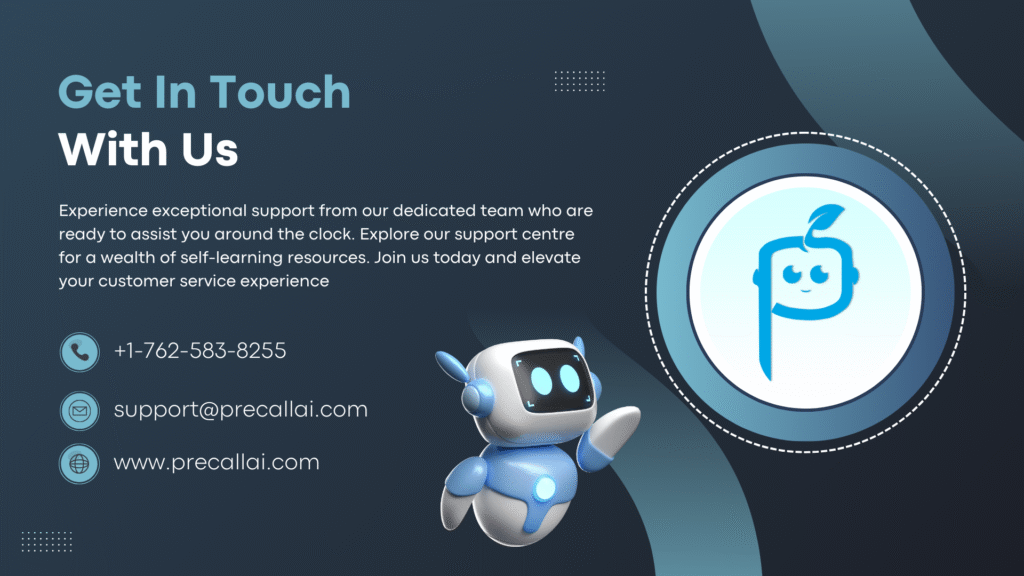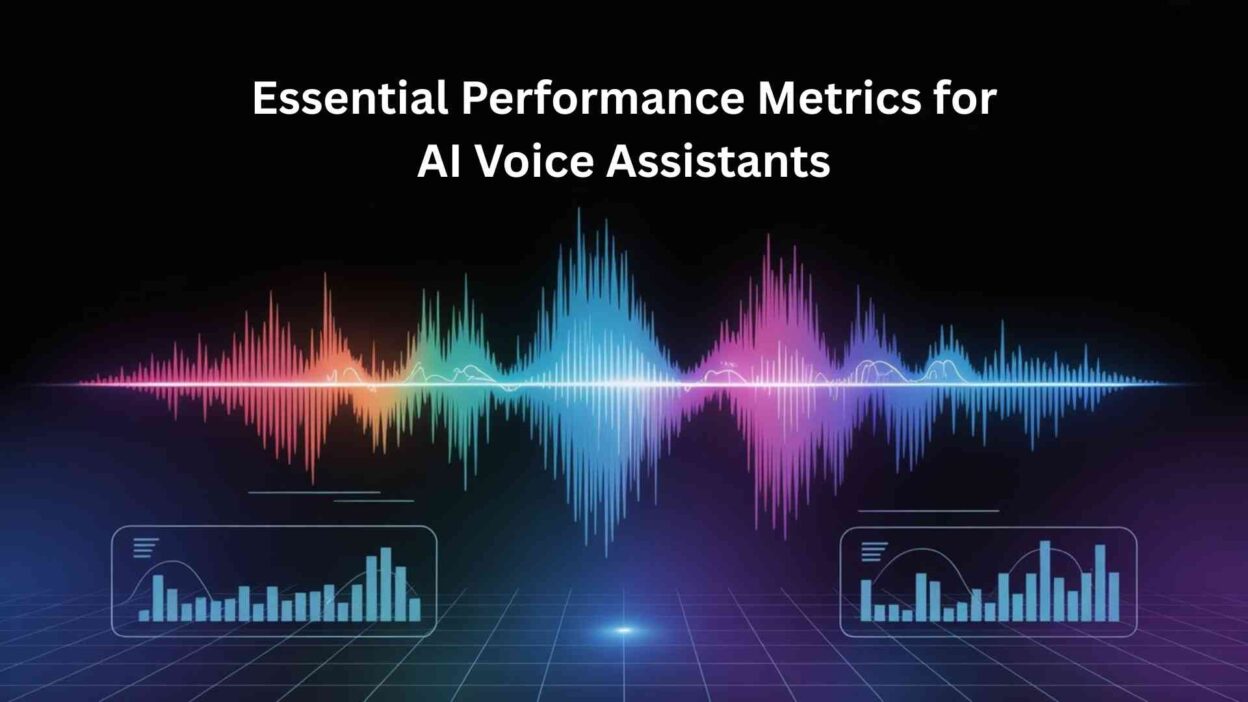Introduction to Voice AI Performance Measurement
TL;DR Voice assistants have become integral to modern digital experiences across industries. Measuring their performance accurately determines success or failure in user adoption. Key performance metrics for voice AI systems provide insights into how well these technologies serve their intended purpose.
Table of Contents
Understanding what to measure makes the difference between guessing and knowing. Raw data alone doesn’t tell the complete story without proper context. Performance evaluation requires a multifaceted approach, examining technical and human factors.
Companies investing in voice technology need clear benchmarks for improvement. Without measurable goals, optimization becomes impossible, and resources get wasted. This guide explores the essential metrics every voice AI team should track.
Understanding Voice AI Performance Fundamentals
Why Metrics Matter for Voice Technology
Voice interactions happen in real-time with immediate user expectations for responsiveness. Poor performance leads to user frustration and abandonment faster than text interfaces. Measuring performance helps identify bottlenecks before they impact large user populations.
Data-driven decisions outperform intuition when optimizing complex AI systems. Metrics reveal patterns invisible to casual observation or anecdotal feedback. Teams can prioritize improvements based on actual impact rather than assumptions.
Business stakeholders require quantifiable results to justify continued investment in voice technology. Clear metrics translate technical performance into understandable business outcomes. This alignment ensures ongoing support for voice AI initiatives.
Categories of Performance Indicators
Technical metrics focus on system behavior like response times and error rates. These measurements indicate whether the underlying infrastructure performs adequately. Engineers rely on technical metrics for troubleshooting and optimization efforts.
User experience metrics capture how people perceive and interact with voice assistants. Satisfaction scores and completion rates fall into this category. These indicators matter most for product managers and user experience designers.
Business metrics connect voice AI performance to organizational goals and revenue. Conversion rates, cost savings, and customer retention demonstrate tangible value. Executives care primarily about metrics showing return on technology investments.
Speech Recognition Accuracy Metrics
Word Error Rate Fundamentals
Word Error Rate measures the percentage of incorrectly transcribed words during recognition. Lower scores indicate better accuracy in converting speech to text. This represents the most fundamental key performance metric for voice AI systems.
Calculate WER by comparing transcribed text against reference transcriptions. Count substitutions, deletions, and insertions as errors in the formula. Industry-leading systems achieve WER below five percent for clear audio.
Context matters enormously when evaluating word error rates across use cases. Medical terminology requires higher accuracy than casual conversation applications. Set appropriate targets based on your specific domain and user needs.
Sentence and Utterance Accuracy
Sentence accuracy measures whether entire phrases are transcribed perfectly without errors. This stricter metric matters for applications requiring complete precision. Commands and queries often fail if any single word is misunderstood.
Short utterances generally achieve higher accuracy than longer conversational passages. Background noise degrades performance significantly in real-world environments compared to laboratory testing. Test accuracy under conditions matching actual deployment scenarios.
Track accuracy separately for different user demographics and accent variations. Some systems perform better for certain speaker populations than others. Identifying disparities helps prioritize fairness and inclusivity improvements.
Intent Recognition Precision
Understanding user intent goes beyond accurate speech transcription. The system must correctly interpret what action the user wants performed. Intent accuracy measures how often the voice assistant understands the underlying request.
Key performance metrics for voice AI systems include precision and recall for intent classification. Precision indicates how many identified intents are correct. Recall measures what percentage of actual intents the system successfully recognizes.
Confusion matrices reveal which intents the system commonly mistakes for each other. This diagnostic information guides training data improvements and model refinements. Some intent pairs require explicit disambiguation logic in application design.
Response Time and Latency Measurements
End-to-End Response Latency
Total response time spans from when the user stops speaking until audio output begins. This represents the user’s perceived wait time for assistance. Lower latency creates more natural conversational flow and better experiences.
Break down total latency into component stages for targeted optimization. Speech recognition, intent processing, and response generation each contribute to delays. Identifying the slowest component focuses improvement efforts effectively.
Target response times below 300 milliseconds for conversational applications. Longer delays make interactions feel sluggish and unnatural to users. Critical applications may require even faster responses for acceptable user satisfaction.
Audio Processing Speed
Measure how quickly the system processes audio input into usable text. Real-time processing enables streaming recognition that starts before users finish speaking. This reduces perceived latency significantly compared to batch processing approaches.
Processing speed depends on audio length, model complexity, and available computing resources. Cloud-based systems add network transmission time to local processing delays. Edge processing eliminates network latency but may sacrifice some accuracy.
Monitor processing speed percentiles rather than just averages for complete pictures. The 95th or 99th percentile reveals worst-case experiences affecting some users. Tail latency optimization prevents bad experiences for unlucky users.
Network and Infrastructure Delays
Network latency between devices and servers contributes significantly to total response time. Geographic distance and network congestion create variable delays outside direct control. Content delivery networks and edge computing reduce these delays.
Key performance metrics for voice AI systems track network performance separately from processing time. This isolates infrastructure issues from algorithm performance problems. Different solutions address each type of delay appropriately.
Timeout thresholds prevent indefinite waiting when network failures occur. Graceful degradation provides partial functionality during connectivity issues. Users appreciate informative error messages over silent failures.
Conversation Quality Indicators
Dialog Success Rate
Dialog success measures what percentage of conversations achieve the user’s intended goal. This holistic metric captures overall system effectiveness better than component measurements. Failed conversations waste user time regardless of technical performance numbers.
Define success criteria clearly for each conversation type your assistant handles. Booking appointments, answering questions, and completing purchases represent different success scenarios. Track success rates separately for different conversation categories.
Analyze failed conversations to understand common breakdown points and patterns. Some failures result from technical errors while others stem from design issues. User testing reveals whether problems are technological or experiential in nature.
Turn-Taking and Interruption Handling
Natural conversations involve smooth turn-taking between participants without awkward pauses. Voice assistants must recognize when users finish speaking versus pausing mid-thought. False interruptions frustrate users, while excessive waiting feels unresponsive.
Measure how often the system incorrectly interrupts users before they complete their thoughts. Track instances where the system waits too long after users finish speaking. Balancing these competing concerns requires careful tuning of silence detection.
Advanced systems handle user interruptions gracefully by stopping output immediately. This allows users to correct mistakes or change direction mid-response. Interruption recovery capability separates excellent assistants from mediocre ones.
Context Retention Accuracy
Maintaining conversation context enables natural multi-turn dialogs without repetition. Users expect assistants to remember previous statements within the same conversation. Context tracking fails when systems require repeated information or lose the thread.
Key performance metrics for voice AI systems evaluate context retention across conversation lengths. Measure how many turns the system correctly maintains the relevant context. Long conversations test memory and reference resolution capabilities.
Pronoun resolution depends entirely on accurate context understanding. “What about that one?” only makes sense with proper context tracking. Test context retention with realistic conversation flows matching actual usage patterns.
User Satisfaction and Experience Metrics
Net Promoter Score for Voice Interfaces
NPS measures user’s likelihood to recommend the voice assistant to others. This single question captures overall satisfaction and perceived value. Scores range from negative 100 to positive 100, with higher being better.
Collect NPS data after users complete significant interactions with the assistant. Survey fatigue reduces response rates if asked too frequently. Balance data collection needs against user experience considerations.
Compare NPS scores across different features, user segments, and time periods. Tracking trends reveals whether improvements actually enhance user satisfaction. Declining scores signal problems requiring immediate attention and investigation.
Task Completion Rates
Task completion measures whether users accomplish their intended goals successfully. This differs from technical success by accounting for user abandonment. Users might give up even when the system technically functions correctly.
Calculate completion rates by dividing successful task completions by total attempts. Define clear criteria for what constitutes task completion versus abandonment. Incomplete sessions might indicate confusion, frustration, or external interruptions.
Low completion rates with high technical accuracy suggest usability problems. Users might not understand how to phrase requests or what capabilities exist. Interface design improvements often boost completion more than accuracy enhancements.
User Frustration Indicators
Frustration manifests through measurable behaviors like repeated requests and raised voices. Track instances where users rephrase the same request multiple times. Multiple attempts indicate the system fails to understand or satisfy needs.
Measure escalation requests where users ask for human assistance. High escalation rates suggest the assistant cannot handle common scenarios. This represents a failure of automation goals regardless of technical metrics.
Key performance metrics for voice AI systems include explicit negative feedback and complaints. Users saying “that’s not what I wanted” or “you don’t understand” provide clear signals. Sentiment analysis of user utterances reveals emotional states during interactions.
Technical Reliability Measurements
System Uptime and Availability
Uptime measures the percentage of time the voice assistant remains operational. Even excellent performance means nothing if the system frequently becomes unavailable. Target five nines of availability for production voice services.
Track both planned and unplanned downtime separately for accurate assessment. Maintenance windows are necessary, but should minimize user impact. Schedule downtime during low-usage periods based on analytics data.
Geographic availability varies when using distributed infrastructure and cloud services. Monitor availability separately for different regions and user populations. Global services require redundancy across multiple geographic locations.
Error Rates and Exception Handling
System errors include crashes, timeouts, and unexpected failures during operation. Track error frequency and categorize by type for prioritization. Some errors are recoverable while others require full conversation restarts.
Graceful error handling maintains user trust even when problems occur. Clear explanations help users understand what went wrong and possible solutions. Silent failures leave users confused and damage perceived reliability.
Monitor error rates across different software versions and deployment environments. Increases after updates indicate new bugs requiring immediate attention. Automated testing catches some issues, but real-world usage reveals others.
Resource Utilization Efficiency
Measure computing resources required to process each voice interaction. CPU usage, memory consumption, and network bandwidth all impact operational costs. Efficient systems deliver good performance at a lower expense.
Key performance metrics for voice AI systems balance performance against resource consumption. Optimization efforts should maintain quality while reducing infrastructure costs. Cloud computing bills directly reflect the efficiency of implementation choices.
Peak usage patterns require sufficient capacity to maintain performance standards. Under-provisioning causes degraded experiences during high-traffic periods. Over-provisioning wastes money on unused capacity most of the time.
Business Impact Metrics
Return on Investment Calculations
ROI compares the benefits gained from voice AI against implementation and operational costs. Calculate the total cost of ownership, including development, infrastructure, and maintenance. Benefits include cost savings, revenue increases, and efficiency improvements.
Quantify both hard and soft benefits in financial terms where possible. Reduced call center volume saves measurable money on staff costs. Improved customer satisfaction has indirect financial value through retention and referrals.
Track ROI over time as systems mature and usage scales. Early implementations rarely show a positive ROI immediately. Long-term value accumulates as user adoption grows and efficiency improves.
Cost Per Interaction
Calculate the average cost for each voice interaction the system handles. Include infrastructure costs, API fees, and allocated development expenses. Lower costs per interaction improve the business case for voice technology.
Compare voice interaction costs against alternative channels like phone support. Voice automation typically costs significantly less than human assistance. Demonstrate cost advantages to justify continued investment and expansion.
Volume affects per-interaction costs substantially through economies of scale. Higher usage spreads fixed costs across more interactions. Growth in adoption naturally improves cost efficiency over time.
Customer Retention Impact
Measure whether voice capabilities affect customer retention rates positively. Compare retention between users who engage voice features versus those who don’t. Strong retention impacts demonstrate long-term business value.
Key performance metrics for voice AI systems connect usage patterns to customer lifetime value. Customers who prefer voice interactions might spend more or stay longer. These correlations justify prioritizing voice experience improvements.
Survey customers about how voice features influence their loyalty decisions. Direct feedback reveals whether voice capabilities are truly differentiating. This qualitative data complements quantitative retention statistics.
Accessibility and Inclusivity Metrics
Performance Across Accents and Dialects
Test recognition accuracy across diverse accent groups and language variations. Many voice systems perform better for some accents than others. Disparities create unfair experiences and limit addressable market reach.
Collect demographic data to identify underserved user populations. Targeted improvements for specific groups enhance inclusivity and market expansion. Fair performance across populations should be a primary design goal.
Partner with diverse user groups during testing and development. Representative testing data ensures systems work for everyone, not just the majority populations. This ethical approach also makes good business sense.
Noise Robustness Testing
Real-world environments contain background noise that degrades speech recognition. Test performance in typical usage environments like cars, homes, and offices. Laboratory accuracy scores often dramatically exceed real-world results.
Measure performance degradation at various noise levels and types. Some noise patterns interfere more than others with recognition accuracy. Multi-microphone arrays and noise cancellation algorithms improve robustness significantly.
Users with hearing impairments benefit from visual feedback during voice interactions. Transcripts displayed in real-time help users verify correct understanding. Multimodal designs accommodate diverse accessibility needs beyond just voice.
Support for Multiple Languages
Track performance metrics separately for each supported language. Some languages are more challenging for speech recognition than others. Resource allocation should address quality gaps between languages.
Key performance metrics for voice AI systems ensure fair performance across linguistic diversity. Underinvested languages create barriers for non-English speakers. Global products require commitment to multilingual excellence.
Code-switching between languages within conversations challenges most systems. Multilingual users naturally mix languages based on context and vocabulary. Supporting code-switching expands usability for bilingual populations.
Continuous Improvement Through Analytics
Data Collection Best Practices
Collect comprehensive interaction data while respecting user privacy regulations. Anonymization protects individual privacy while enabling aggregate analysis. Clear consent processes maintain user trust and legal compliance.
Sample interactions for detailed analysis when full logging is impractical. Representative samples provide sufficient insights at lower storage costs. Balance data completeness against operational overhead and privacy concerns.
Implement robust data pipelines that process metrics in near real-time. Fast feedback loops enable rapid iteration and improvement. Historical data reveals long-term trends and seasonal patterns.
A/B Testing Voice Features
Compare different approaches systematically through controlled experiments. Random assignment ensures valid comparisons between variations. Statistical significance testing confirms real improvements versus random variation.
Test one variable at a time to isolate causal relationships. Changing multiple factors simultaneously makes interpretation impossible. Disciplined experimentation yields actionable insights faster than undirected changes.
Monitor both primary metrics and potential negative side effects. Improvements in one area sometimes degrade other aspects unintentionally. Holistic evaluation prevents optimization tunnel vision.
Benchmarking Against Competitors
Compare your voice assistant’s performance against industry standards and competitors. Benchmarking reveals relative strengths and weaknesses objectively. This context helps set realistic improvement goals.
Key performance metrics for voice AI systems should meet or exceed user expectations set by other products. Users compare experiences across different assistants consciously and subconsciously. Competitive performance is necessary for market success.
Industry reports and research papers publish benchmark results for reference. Participate in standardized evaluation challenges where appropriate. External validation complements internal testing and analysis.
Implementation Strategies for Metric Tracking
Selecting the Right Metrics
Choose metrics aligned with specific business objectives and user needs. Tracking everything creates data overload without actionable insights. Focus on metrics that drive decisions and improvements.
Prioritize metrics based on the current development stage and maturity. Early projects emphasize core functionality while mature products optimize experience details. Metric priorities evolve as systems develop and scale.
Balance leading indicators predicting future issues against lagging indicators confirming results. Leading indicators enable proactive responses before problems affect users. Lagging indicators validate whether improvements achieved the intended effects.
Building Monitoring Dashboards
Centralized dashboards provide at-a-glance visibility into system health. Real-time updates enable rapid response to emerging problems. Visualization helps teams understand complex data patterns quickly.
Customize dashboard views for different stakeholders and roles. Engineers need technical details while executives want business summaries. Role-appropriate information improves decision-making at all levels.
Set up automated alerts for metrics exceeding acceptable thresholds. Proactive notifications enable faster response than periodic checking. Alert fatigue from false positives undermines monitoring effectiveness.
Establishing Baseline and Target Values
Document current performance baselines before implementing improvements. Baselines provide reference points for measuring progress objectively. Without baselines, determining improvement success becomes impossible.
Key performance metrics for voice AI systems require realistic targets based on benchmarks and constraints. Aspirational goals motivate teams while unrealistic targets demoralize. Research what performance levels are achievable with current technology.
Review and update targets periodically as systems improve and expectations evolve. Yesterday’s stretch goal becomes today’s baseline as technology advances. Continuous improvement requires continuously raising performance standards.
Advanced Metrics for Sophisticated Systems
Personality Consistency Scoring
Voice assistants with defined personalities should maintain consistent character throughout interactions. Measure consistency in language style, tone, and behavioral responses. Inconsistency breaks immersion and damages user relationships.
Evaluate personality traits across diverse scenarios and conversation types. The assistant should feel like the same entity regardless of context. Personality coherence builds user trust and emotional connection.
Survey users about perceived personality attributes and consistency. User perception matters more than internal design intentions. Gaps between intended and perceived personality require refinement.
Proactive Assistance Quality
Proactive suggestions and predictions should be timely, relevant, and non-intrusive. Measure how often users accept proactive offers versus ignoring or dismissing them. High acceptance rates validate predictive accuracy.
Track user satisfaction specifically with proactive features separately from reactive responses. Some users appreciate anticipatory assistance while others find it annoying. Personalization accommodates different preference profiles.
False proactive triggers waste user attention and erode trust. Measure the precision of proactive activation conditions carefully. Conservative triggering may miss opportunities but preserves user goodwill.
Multi-Modal Integration Effectiveness
Voice interfaces often integrate with visual displays and touch interactions. Measure how smoothly users transition between modalities during tasks. Seamless integration feels natural, while friction causes frustration.
Track which combinations of modalities users prefer for different tasks. Some tasks suit voice better while others work better with visual interfaces. Optimal design matches modality strengths to task requirements.
Key performance metrics for voice AI systems with multiple modalities assess coordination quality. Voice and visual outputs should complement rather than contradict each other. Synchronized multi-modal experiences feel cohesive and professional.
Industry-Specific Performance Considerations
Healthcare Voice Applications
Medical applications demand extremely high accuracy due to patient safety implications. Medication names and dosages must be transcribed perfectly. Error tolerances are much lower than consumer applications.
Privacy regulations like HIPAA impose strict requirements on data handling. Compliance metrics verify proper protection of sensitive health information. Security audits and certifications provide external validation.
Clinical efficiency metrics measure time saved by voice-enabled workflows. Documentation time reduction directly impacts healthcare provider productivity. These savings justify a significant investment in specialized voice systems.
Automotive Voice Interfaces
Driver distraction metrics are paramount for vehicle voice assistants. Eye-off-road time and task completion duration indicate safety impact. Voice interfaces must minimize driver distraction to be viable.
Environmental noise in vehicles challenges speech recognition significantly. Engine noise, road sounds, and passenger conversations interfere with recognition. Automotive-specific testing ensures adequate noise robustness.
Integration with vehicle systems requires different performance standards. Safety-critical functions demand higher reliability than entertainment features. Prioritize metrics based on functional safety requirements.
Smart Home Control Systems
Command execution speed matters critically for light switches and temperature controls. Users expect immediate responses to simple commands. Delays feel broken even when technically successful.
Key performance metrics for voice AI systems in homes include family member recognition accuracy. Personalized responses and privacy require identifying who is speaking. Voice biometric accuracy affects both functionality and security.
Device interoperability metrics measure successful control across different smart home brands. Users expect unified control regardless of device manufacturers. Integration reliability determines user satisfaction significantly.
Frequently Asked Questions
What is the most important metric for voice AI?
No single metric captures complete system quality comprehensively. Task completion rate often matters most for user-facing applications. Combine multiple metrics for holistic performance assessment.
How often should metrics be reviewed?
Real-time monitoring detects immediate issues requiring urgent response. Weekly reviews identify trends and guide iterative improvements. Quarterly deep analysis informs strategic decisions and planning.
What accuracy level is acceptable?
Acceptable accuracy depends entirely on use case and user expectations. Consumer applications typically target 95 percent or higher recognition accuracy. Mission-critical applications require near-perfect accuracy for safety.
How do you measure voice assistant ROI?
Compare total costs against quantified benefits like reduced support expenses. Include both direct savings and indirect value from improved experiences. Long-term tracking reveals true ROI as adoption matures.
What causes high latency in voice systems?
Network delays, model complexity, and infrastructure limitations all contribute. Identify the specific bottleneck through component-level latency measurement. Optimization focuses on the slowest stage first.
How do you test voice AI fairly?
Use diverse test populations representing your actual user demographics. Include various accents, ages, and environmental conditions in testing. Fair testing ensures equitable performance for all users.
What metrics matter for conversational AI?
Dialog success rate and context retention accuracy are crucial. Multi-turn conversation capability requires different metrics than simple commands. Natural interaction quality often matters more than raw accuracy.
How do noise levels affect performance?
Background noise degrades speech recognition accuracy substantially in practice. Measure performance at various signal-to-noise ratios matching real environments. Noise robustness separates excellent systems from mediocre ones.
Can metrics predict user satisfaction?
Technical metrics correlate with satisfaction but don’t capture everything. Direct user feedback remains essential alongside quantitative measurements. Key performance metrics for voice AI systems should include both types.
What benchmarks exist for voice AI?
Academic challenges and industry reports provide comparative benchmarks. Common datasets enable standardized performance comparisons. Benchmark against both competitors and internal historical performance.
Read More: Rime TTS Customization Options for Developers Guide
Conclusion

Measuring voice AI performance requires comprehensive tracking across multiple dimensions. Technical accuracy alone doesn’t guarantee successful user experiences. Key performance metrics for voice AI systems must balance technical excellence with user satisfaction.
Start with fundamental metrics like accuracy and latency before expanding measurement scope. Build monitoring infrastructure early in development for continuous visibility. Data-driven optimization dramatically outperforms intuition-based approaches.
Different stakeholders care about different metrics reflecting their priorities. Engineers focus on technical performance while executives track business outcomes. Effective communication translates technical metrics into business value.
Voice AI technology continues to evolve rapidly, with improving capabilities. Metrics that matter today may become less relevant tomorrow. Adapt measurement strategies as technology and user expectations advance.
Investment in proper performance measurement pays dividends through faster improvement cycles. Teams armed with good data make better decisions than those operating without it. Key performance metrics for voice AI systems transform vague goals into concrete achievements.
Begin implementing comprehensive metric tracking in your voice AI projects today. The insights gained will guide every decision and optimization effort. Performance measurement separates successful voice assistants from abandoned experiments.
User satisfaction ultimately determines whether voice technology succeeds in the market. All technical metrics should connect back to improving actual user experiences. Build voice assistants that users love by measuring what truly matters.






[…] Read More: Essential Performance Metrics for AI Voice Assistants […]
[…] Read more:-Essential Performance Metrics for AI Voice Assistants […]